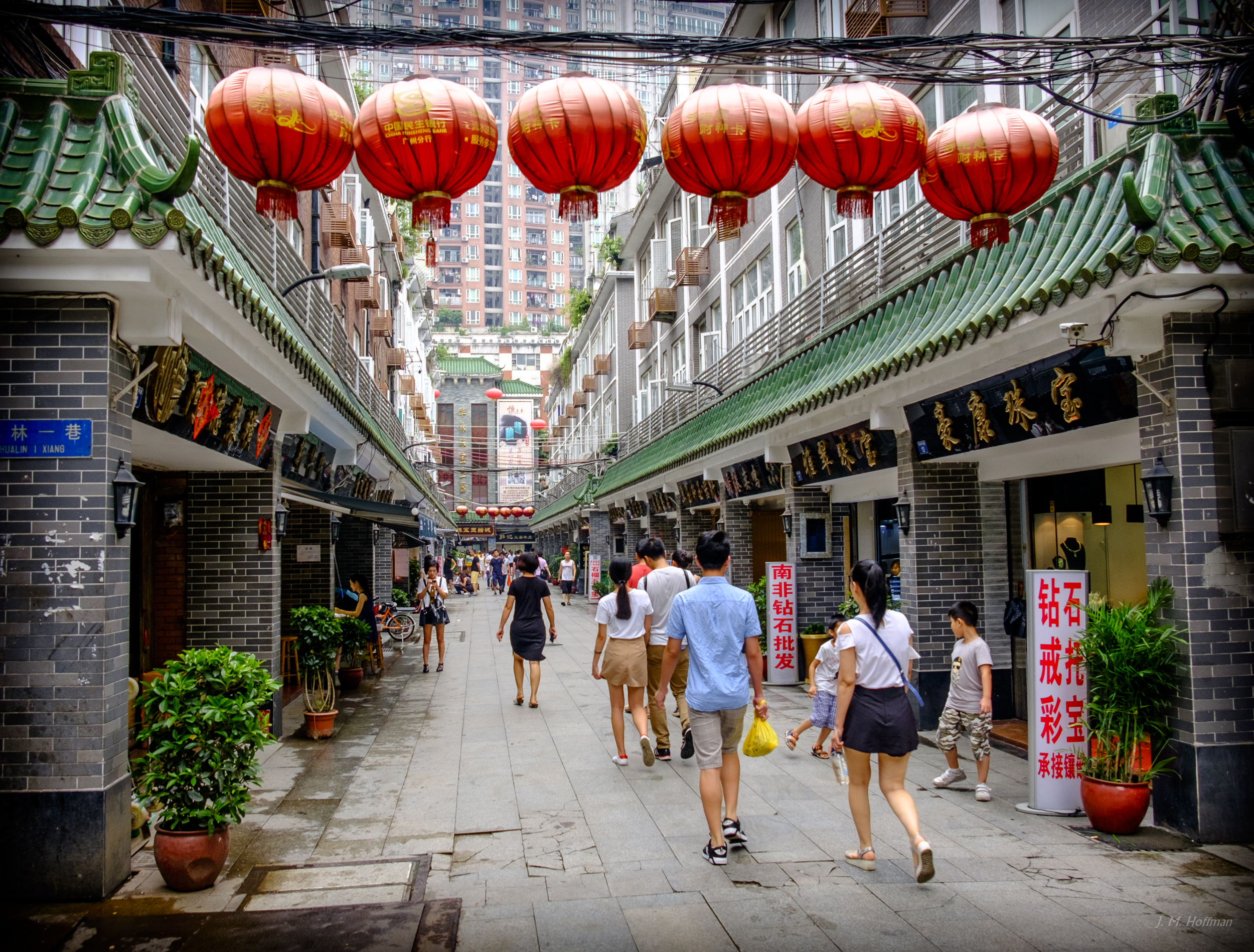Want to improve the quality of your travel photos? Here are five quick tips:
1. Don’t worry about your equipment. Almost any camera lets you take amazing pictures to post on-line, so your phone is often all you need. (But you’ll want to invest in better gear for wildlife, sports, and other specialized tasks.)
For example, here’s a shot I snapped of a popular beach front in Durban, South Africa with a simple Samsung Galaxy 5:
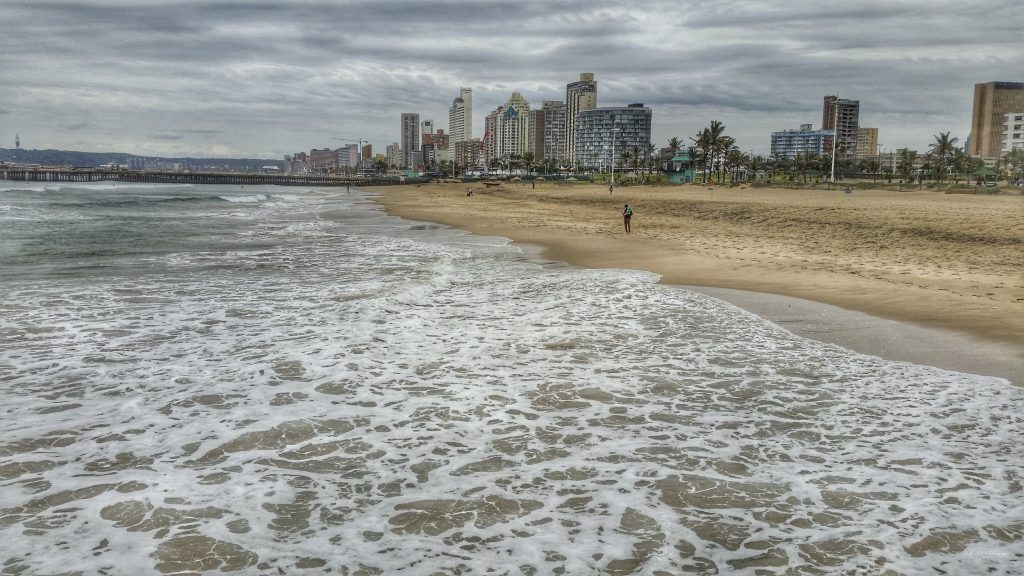
I used the same phone to capture the combination of smog and towering architecture in Guangzhou, China:
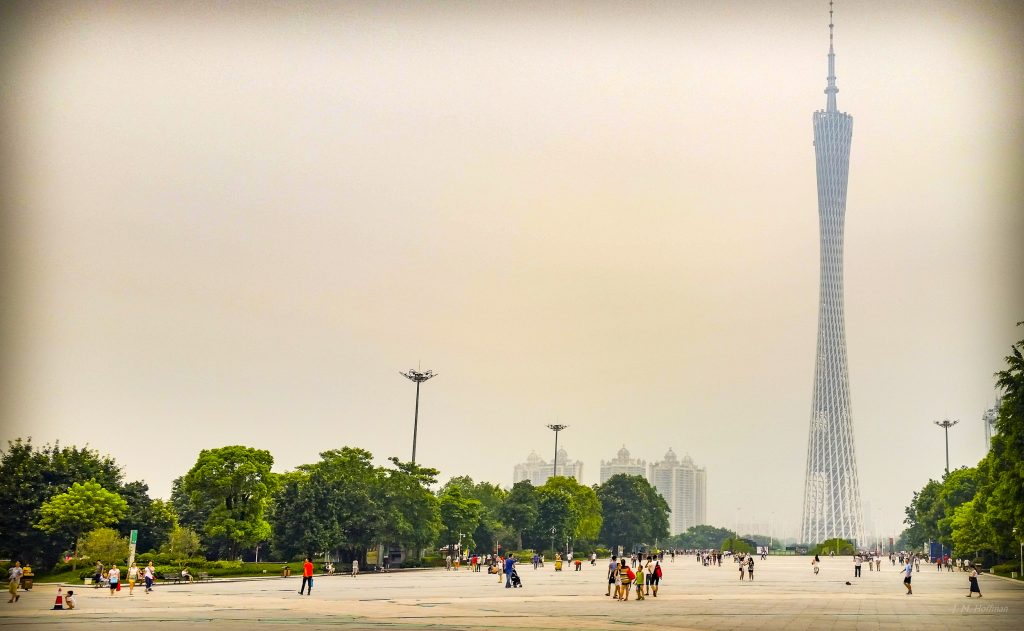
2. Choose a subject. Good photos usually tell a story about one thing: a person, or a couple, or a group, or an animal, or a building, or a plant, or whatever. Even landscapes and cityscapes benefit from a focal point. So look for something that stands out, and build your shot around that. (Bonus points if a natural line — like a seashore or road, or someone’s glance — leads to your photo’s subject.)
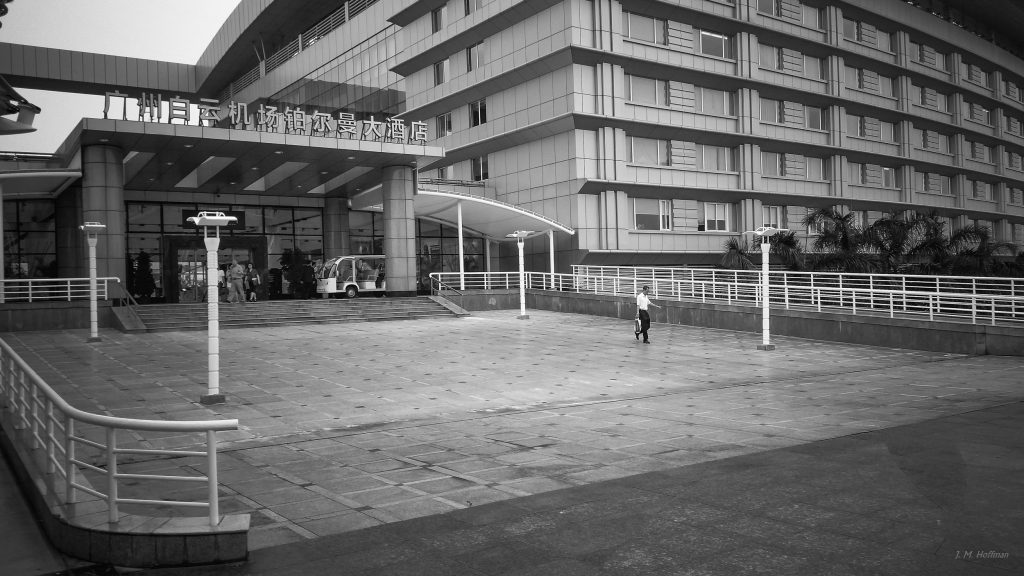
When I unexpectedly arrived at the Pullman airport hotel in Guangzhou, China, I waited until one person was walking through the frame before aiming my Galaxy 5 at the Chinese lettering over the entrance. (People also help establish a sense of scale.)
Here’s another example, from a jade district in Guangzhou:
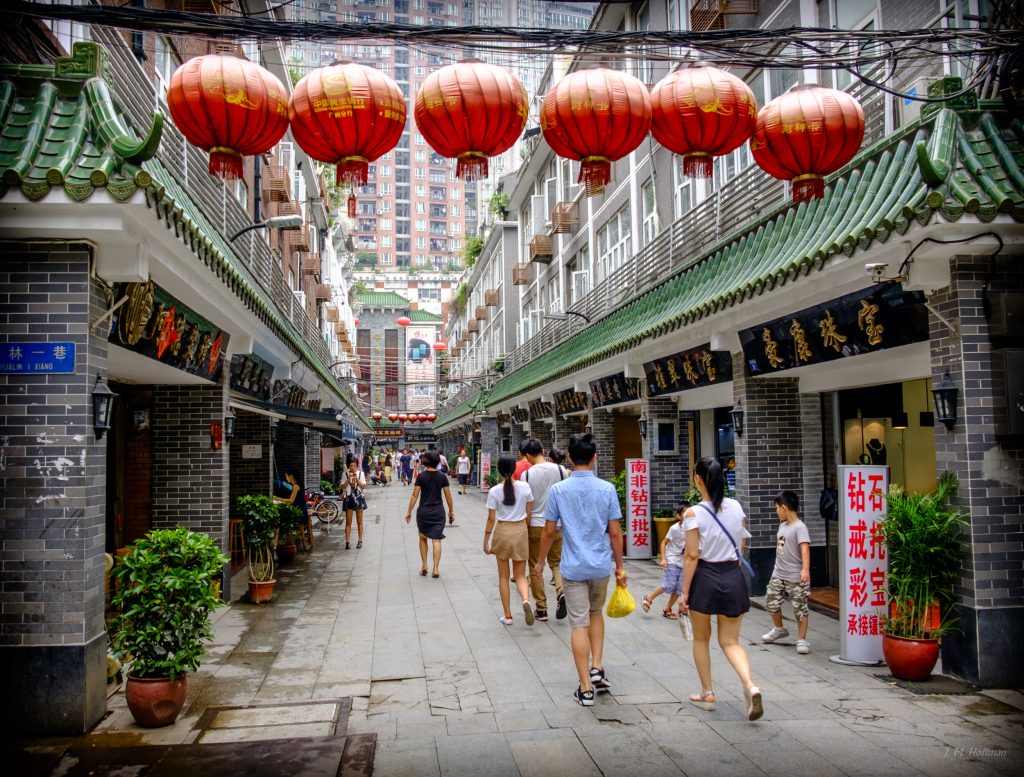
What makes this shot for me are the people in the foreground who invite the viewer into the scene.
3. Put your own emotions aside. If you’re on your honeymoon, every photo you take will seem romantic. Sitting in the sun, you’ll think every shot is warm and relaxing. And on your first adventure to an exotic locale — yep! — your shots will all appear full of exotic adventure, but probably only to you. So take time to ask yourself if the photo actually conveys what you want it to.
4. Download editing software. Simple editing software available for Android and iPhone (and desktops) makes it easy to crop your photos, to fix basic things like color balance and lighting, or to straighten horizons and other lines. You can also add a border, which can significantly help some photos. And you have the option of really adding pizazz: ramp up the colors, or go black-and-white for effect.
Most good photos that you see now have been edited at least a little.
For example, the unedited version of my Durban shot from above looks cold and lacks punch:
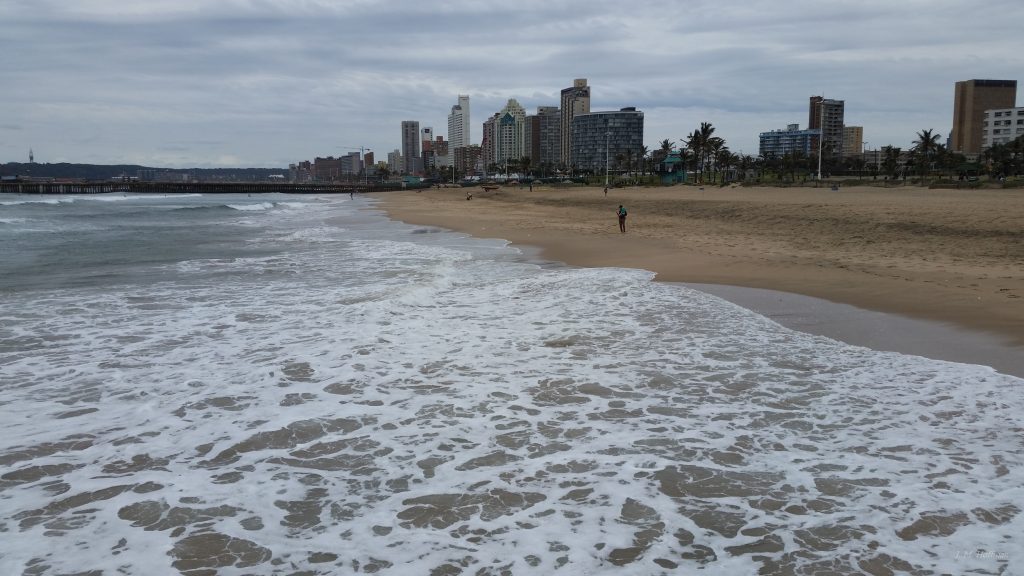
A more extreme example comes from when I wanted to document the devastation that industry has wrought on the shoreline in Haifa, Israel. In cloudy and dull weather, I took this mediocre image:
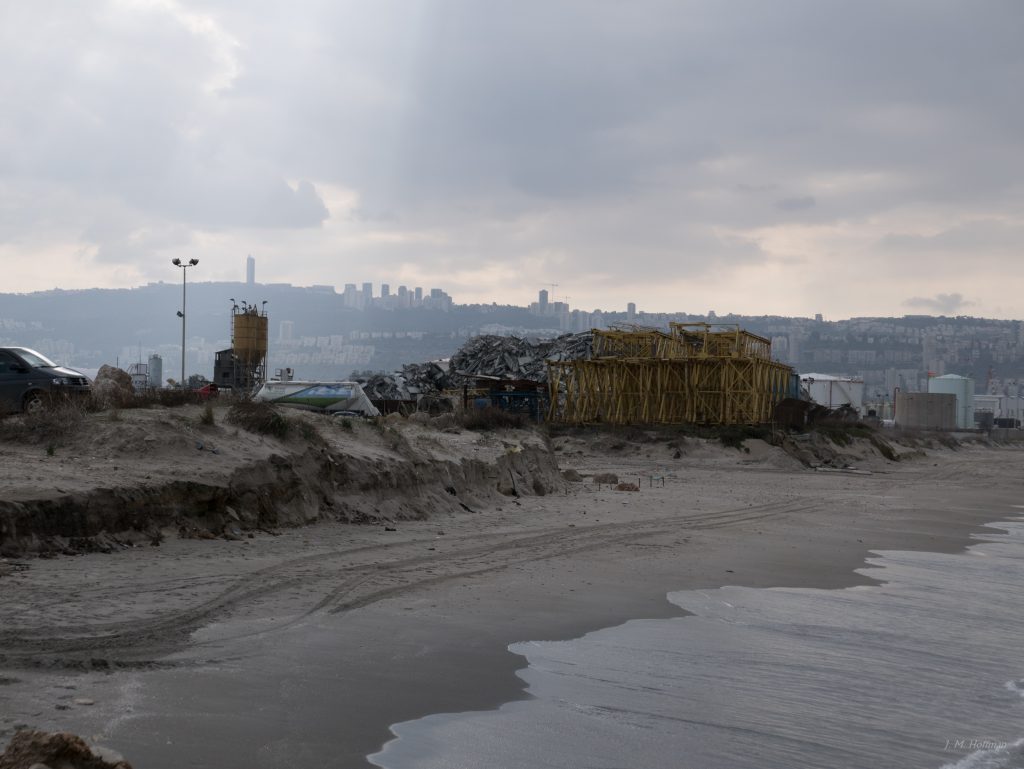
Then I cropped the photo, leaving just enough water to show that I’m at the shore; upped the contrast; lightened the shadows, to reveal more detail; brought out the “God rays,” which are actually in the original photo, but super hard to see; and converted the whole thing to black and white:
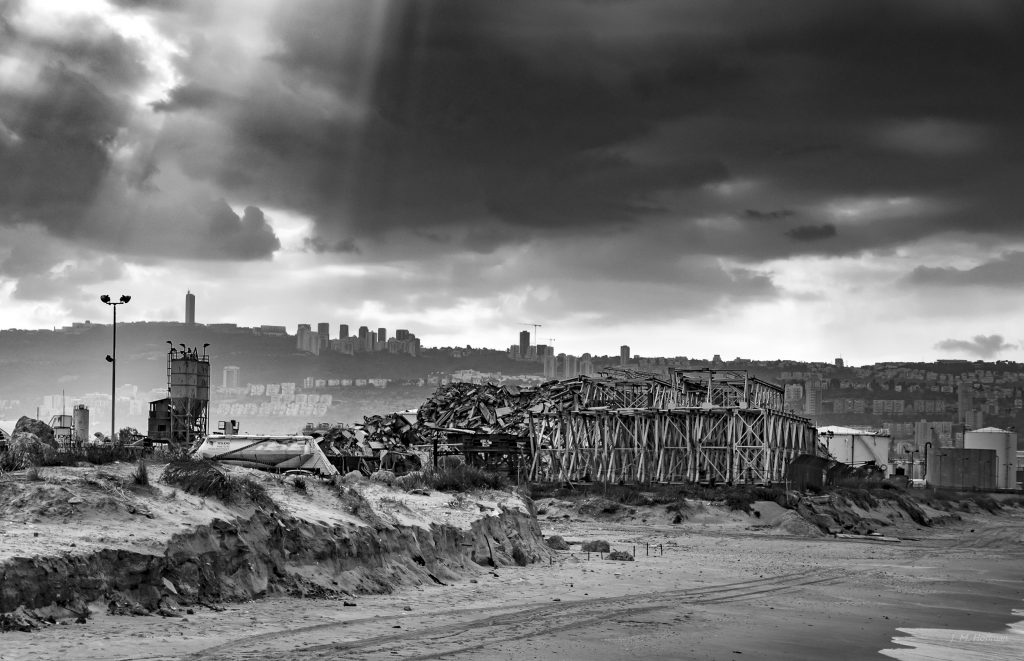
For editing on the go, I like Google’s Snapseed (Android / iOS), which is free and well supported. At home I mostly use Lightroom. Photoshop has even more power. GIMP is a nice free option.
5. Experiment.
Don’t just hold your camera at eye-level and shoot. Try a view from the ground or over your head. Look for a reflection. Or put something quirky in the shot, like I did with this photo of downtown Melbourne, Australia.
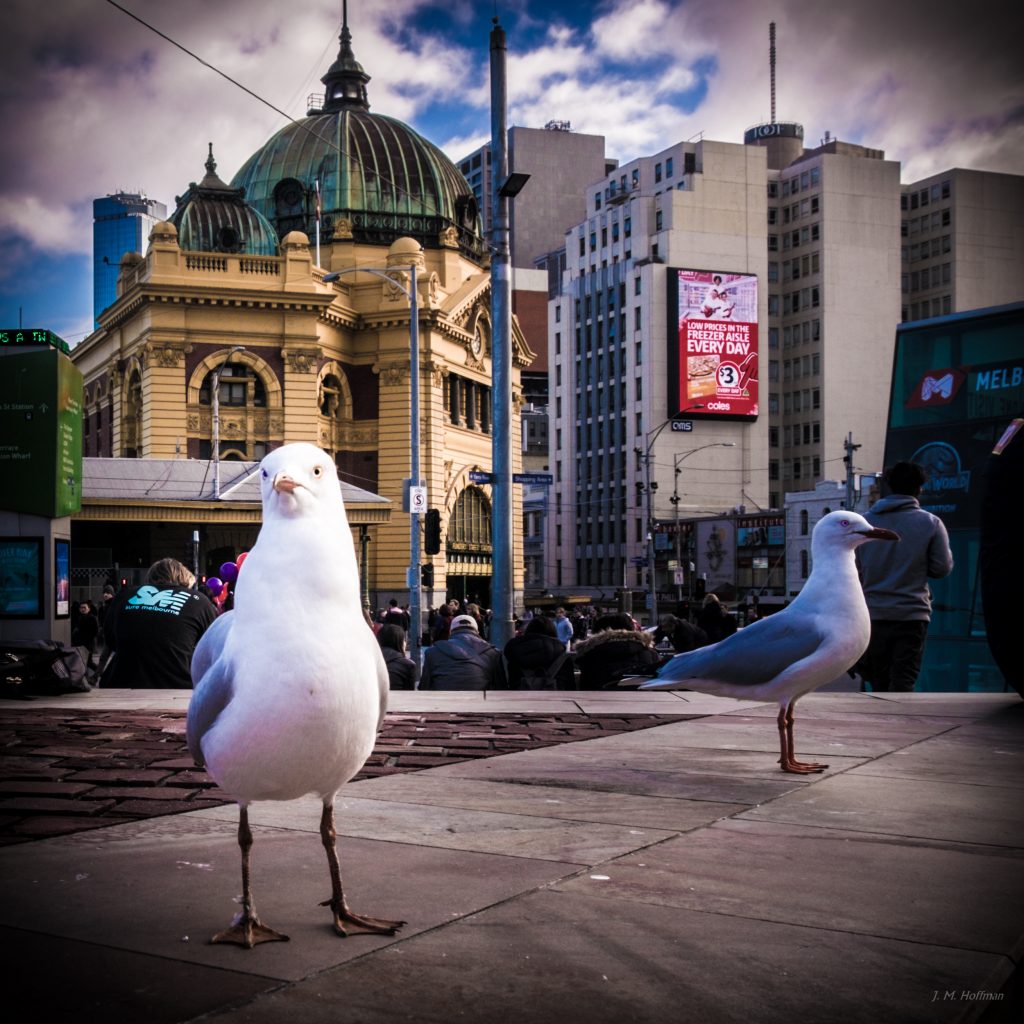
Thoughts?




